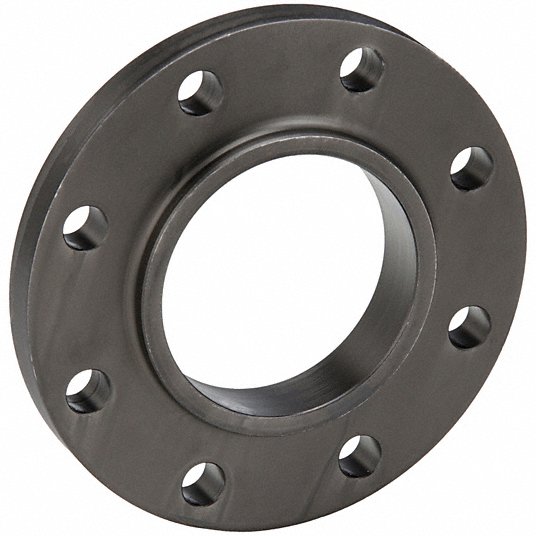How to Choose Steel Pipe Flange Materials?
When purchasing steel pipe flanges, you must consider the flange material in addition to physical measurements and bolt hole alignment. The chemical composition and physical properties are important in determining whether a material will be appropriate for a given application. You can look to a combination of standards to guide your decision.
What are the different types of flange materials?
Pipes and flanges must be durable enough to withstand heat, pressure, vibrations, and corrosion, while still providing a leak proof seal. Flange class helps determine bolt hole alignment, pressure and temperature rating, and dimensional standards, however, flange material specifications must also be considered based on your application:
Steel is the most common flange material and has higher carbon content for applications requiring superior strength. The manufacturing method is also important to understand. There are typically three methods used:
Plate flanges are manufactured when metal slabs are sent through rollers until they reach the desired thickness. A plate flange typically costs less, but doesn’t offer the same strength or variety of material and sizes that other manufacturing methods do.
Cast flanges are manufactured by pouring molten metal into a flange mold. The metal cools and hardens, and then the flange is removed from the mold and machined to the appropriate specifications. This lower-cost option offers plenty of flexibility, but does not produce the highest strength flanges.
Forged flanges are made through a process of heating and forming the material, and then machining the part to the proper specifications. This creates the highest strength flange, but comes at a higher cost.
Consider the Intended Application
Choose the right flange material based on its intended use and the requirements specific to that application. Generally, your flange material will match your pipe material, but this is not always the case. Consider the strengths and weaknesses of each material when designing a piping system; the material should suit the application requirements or it may fail prematurely.
Budget considerations
Certain fluids, for example, fuel or corrosive liquids, require pipes and flanges manufactured of stainless steel, alloy, or other corrosion resistant materials. Pipes and flanges used for air or other non-corrosive applications may not require the same corrosion resistant material as acidic or caustic liquids.
Consult Flange Requirements and Standards
The standards dictate the chemical composition, dimensions, and other specifications for flanges. Generally, your flange and pipe material should meet the same standards.
Flange Material Source
It is also important to consider the requirements around where the flange material is sourced from. For many applications it may be fine to us import material in order to save on cost, but often Buy America or Domestic material may be required.
Other Factors for Choosing Flanges
Consider the pipe material, pressure and temperature ratings, flange dimensions, and tolerances, to determine the appropriate flange material. ANSI ratings provide information on pressure and heat tolerances.
Fitting type is an important consideration as well. Does your fitting require welding? If so, the material you use should allow welding. For non-welded styles, such as lap joint or threaded flanges, weldability is less of a concern, and other requirements will take precedence.
When choosing the ideal flange material, refer to the standards required for your intended application, consider the pipe material that will connect to the flange, and ensure the flange material you choose is rated for the temperature and pressure it must withstand.

评论
发表评论